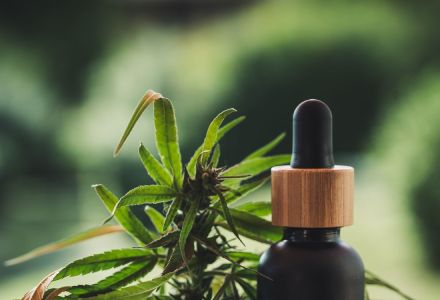There are a number of terms that seem to appear repeatedly in connection to CBD. Some may sound as complicated as this one: The endocannabinoid system (ECS).
Briefly said, this system is part of the nervous system that you were born with. You could call it a signal network or regulatory system. So if you're up to let us now explain the term in more detail and let's have a closer look at the important functions that this system has in your body.
The actual translation of the word Endocannabinoid System
It sounds pretty complex and so is the translation. 'Endo' refers to all processes that can occur within a system. In this case, we are talking about the systems in the human body. 'Endo' is the abbreviation for the longer term 'Endogenous'. How lucky! Otherwise, the word would be even more confusing. Imagine having it called: Endogenouscannabinoid System.
The term 'cannabinoid' refers to some of the ingredients of the cannabis plant. A cannabinoid could be for example CBD as well as THC, CBG or CBC and many more. These cannabinoids are able to interact with the system allowing them to have certain effects on you. But we will talk about it later on.
That's interesting...
The human endocannabinoid system only had been detected upon finding this very thing plus the cannabinoids in the hemp plant.
A trip back into history
Let's have a little time travel first. It had been the year 1987 when Prof. Allyn Howlett from Saint-Louis University in Missouri (USA) discovered that the ingredients of the cannabis plant are able to affect our bodies. At the same time, she figured out that there is a system with which those ingredients are able to interact via dedicated receptors.
Not long after and until now science opened its doors (again) to the world of cannabis and hemp that had been closed a long time due to its historically negative painted image. Besides the existing findings of the potentially positive effects of CBD and Co. scientists keep on discovering further benefits day by day. Now that's what we call a hot topic.
These are the components of the endocannabinoid system
Even though the number and size of researches are rapidly growing there still is a big gap of knowledge and scientific evidence on the topic. This gap is a result of years of prohibition due to the above mentioned dangerous image that had been created decades ago. So far we haven't discovered much about it regarding the huge potential. But there are some things to tell you. (Without being able to do fundamental statements due to law restrictions and missing evidence.)
Have you received a message?
Most definitely! According to current research, the endocannabinoid system mainly consists of three receptors: C1, C2 and C3. Using our simple words, these receptors are serving like small recipients in our human body. They constantly are receiving signals from neurotransmitters. It might help you to imagine your mobile being the receptors, the signal being the message and the neurotransmitter being the sender.
Once a signal arrives it will trigger an appropriate reaction in your body. The signal in our case would be sent by the cannabinoids making them the sender in our described scenario. Now each of the three receptors that are receiving the message got its own personal task in your body. Hence it makes sense that they are located in different parts of your body too.
The two systems - the division
And there is even more to it. Your body not only is able to interact with the cannabinoids of the cannabis plant. It also can produce its own: your very own endocannabinoids.
Therefore, a difference has to be made between two terms:
- The endogenous cannabinoids → internal neurotransmitters produced by your body on its own
- The exogenous cannabinoids → external neurotransmitters that may affect your body such as CBD or THC
Functions of the endocannabinoid system - who is responsible?
As we just learned, the receptors are responsible for working on different tasks in your body. Therefore, it's best to explain the functionalities by having a closer look at the individual receptors.
- CB1 receptors: They in fact are an enormously important component of your nervous system. Mainly located in your brain, as well as in some organs such as the intestine, they got a lot of work to do. Research suggests that the CB1 receptors in your brain are responsible for cognitive performance, pain perception and information processing. Additionally, they are controlling your memory formation. And can you imagine? This only is a small part of their responsibilities.
- CB2 receptors: Are you feeling good? You might also thank your CB2s! They are taking care of your immune system to ensure that the complex defence system is well equipped.
- CB3 receptors: These receptors are scientifically associated with: reducing inflammation, repairing tissue damage and balancing your metabolism. But please keep in mind that so far there aren't a lot of representative research results on CB3 receptors.
Out of balance - let CBD support you
When your endocannabinoid system is out of balance, your body's affected for sure. The way of life and the day-to-day activities usually are playing a major role in whether the inner systems are balanced or not. That's why you always should try to reach for a healthy lifestyle.
CBD, as a natural product of the cannabis plant, can't replace your internally produced endocannabinoid. But it might be able to support, starring as an inhibitor. For many CBD users a reduced level of stress, a higher general well-being as well as providing high-quality properties for the skin are some of the positive effects caused by Cannabidiol.
Now that you know more about your valuable endocannabinoid system it maybe is time to find out yourself if CBD can do something for you.



